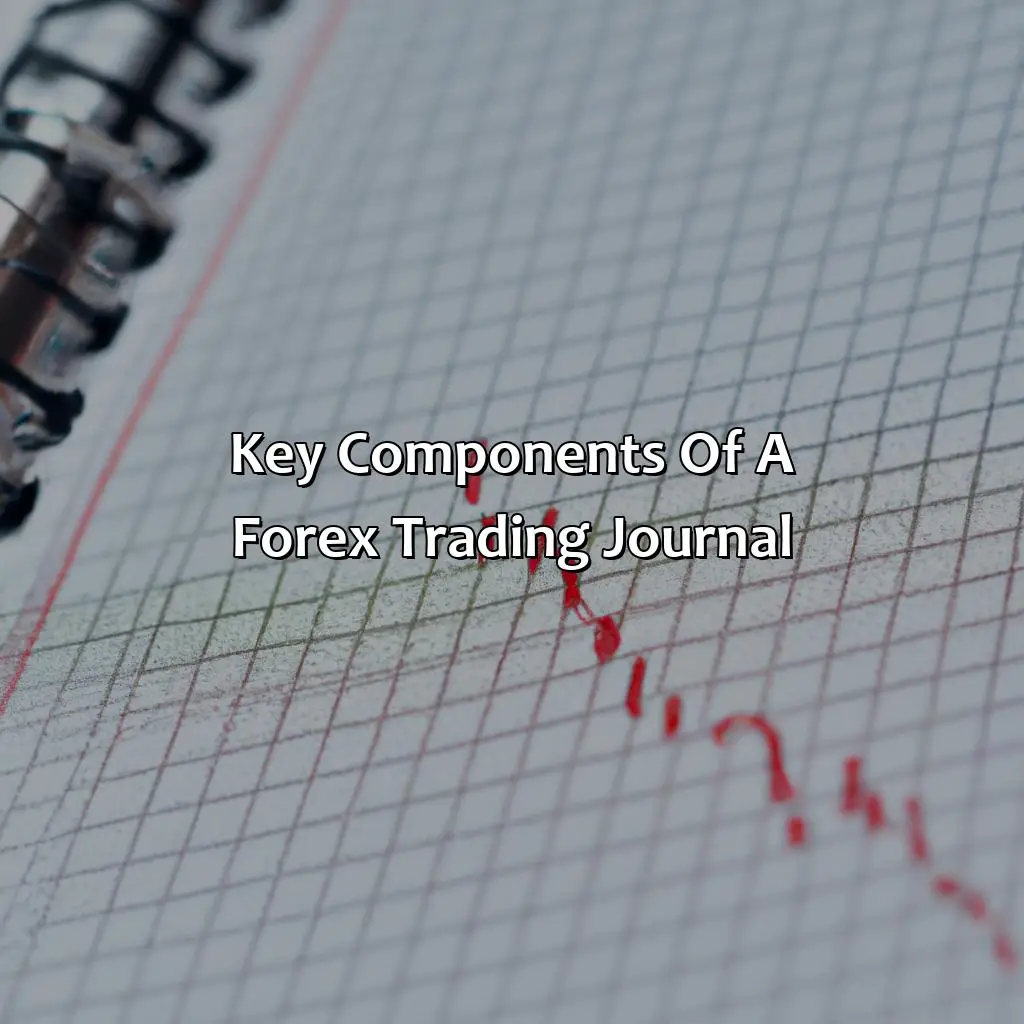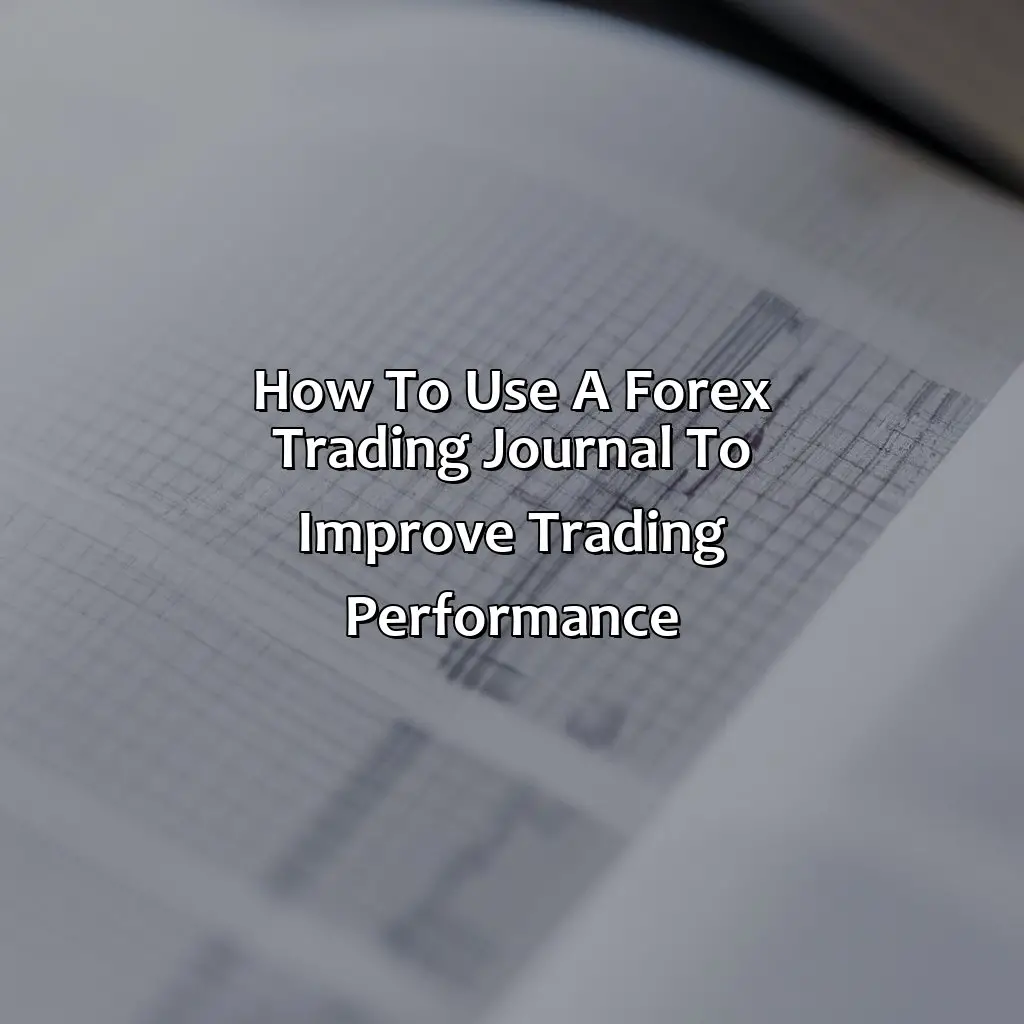Forex traders need to maintain a trading journal to track their progress and analyze their trades. The journal can help them track their trading psychology, trade analysis, market analysis, trading strategy, risk management, trading mistakes, and discipline.
Here are some of the benefits of maintaining a Forex trading journal:
- Helps in tracking personal progress and identifying strengths and weaknesses in their trading style and strategy
- Helps in identifying patterns and trends in trades and market behavior, which can help in improving future trades
- Helps in analyzing the entry and exit points and the reasons for taking those positions, which can help in fine-tuning the trading strategy
- Helps in identifying and avoiding the common trading mistakes that traders make, such as over-trading or emotional trading
- Helps in maintaining discipline and consistency in the trading approach and avoiding impulsive decisions.
Apart from the above benefits, maintaining a Forex trading journal also provides a detailed record of the trade history, which can be used for tax purposes or to provide an overview to potential investors or mentors.
TraderSync
TraderSync is one of the worlds leading forex trading journals. The platform automatically imports your trades for you to add comments, filter and analyse in order to increase your edge in the markets. The benefit of TraderSync is the fact the platform works in all markets including forex, stock, futures and options.
- Cheap
- Easy To Use
- Great Reporting
- Industry Leader!
To make the most out of a Forex trading journal, traders should focus on recording all relevant details, including entry and exit points, the reason for each trade, and any relevant news or events that might have affected the trade. Additionally, they should review the journal regularly to track their progress and identify areas for improvement. By developing a disciplined and systematic approach to trading and recording their progress, traders can improve their chances of success in the Forex market.
Key Components of a Forex Trading Journal


Photo Credits: forexbrokerreport.com by Gerald Torres
For tracking progress in forex trading, you need a journal. It should have components that help you analyze and boost performance. Crafting a complete and effective forex trading journal? Include sub-sections like:
- Personal Trading Goals and Objectives
- Trading Entry and Exit Points
- Analysis of Market Conditions and Indicators
- Emotional and Psychological State During Trading
- Effective Risk Management Strategies
These sub-sections help you focus on:
- Goal setting
- Self-reflection
- Entry and exit strategies
- Market analysis
- Emotional control
- Risk management
Personal Trading Goals and Objectives
Establishing a clear vision of one’s trading objective is vital for forex traders to succeed in the market. Personal trading objectives or goals provide direction and purpose, which helps in decision-making and allocation of resources. Goal setting is a proven technique for success and motivates individuals to stay focused and disciplined while making trading decisions.
Crafting well-defined personal trading goals can help traders concentrate on their long-term objectives. These goals must be specific, measurable, achievable, realistic, and time-bound (SMART). Setting unrealistic goals may lead to stress, frustration, financial loss, and cause traders to deviate from their trading plan.
Self-reflection is an essential element in the process of goal-setting. A forex trader must evaluate their strengths and weaknesses before setting up personal objectives. This self-evaluation can improve the quality of their trades as they understand where they are competent and where they require assistance.
As per industry experts’ observations on forex trading journals, tracking personal objectives into a forex journal holds significant importance. Writing down personal goals forces traders to articulate what they want from their trades clearly. Recording progress towards each step helps keep them accountable for this process while identifying what strategies work best.
A seasoned forex trader once shared that defining his primary objective was critical to making his initial investment decisions when he began trading years ago. He stated that later, it became like a routine – checking himself against those expectations within every trade he ever took so that any course correction could be made if needed immediately.
Thus achieving one’s goal set requires continuous self-assessment through experienced observations by maintaining a professional forex journal record over time.
Knowing when to enter and exit trades is like knowing when to leave a party – timing is everything.
Edgewonk
Edgewonk combines journalling and a trading diary to provide a great analysis tool for forex traders looking to improve their edge. The tool works on all devices and comes with a trade simulator, data filters, graphs, multiple journals and a notebook for screenshots!
- Cheap
- Easy To Use
- Great Reporting
- Industry Leader!
Trading Entry and Exit Points
Trading Edge Analysis and Trade Execution Strategies
To achieve profitability in forex trading, traders must develop a trading edge by utilizing effective entry and exit strategies. This helps them to identify profitable trades based on market trends and conditions. The journal serves as a record of trade execution strategies aimed at developing effective techniques for optimizing trade management. It helps traders to analyze their trade adjustments and review their performance to make necessary improvements.
Here are five key components of this aspect of the forex trading journal:
- Identify your ideal entry strategies
- Record your exit strategies
- Analyze all aspects of the market condition before entering or exiting a trade
- Document your emotional state during each trade
- Detail the risk management measures employed in each trade
Pro Tip: Simplify your record-keeping process by using templates with preset columns for relevant data categories such as date-time stamps, market currency pairs traded, entry and exit prices, stop-loss levels, risk-reward ratios, analysis techniques used and notes about why you entered or exited trades.
Unleash your inner Sherlock and dissect the market with precision using a combination of technical tools, fundamental analysis, and economic indicators.
Analysis of Market Conditions and Indicators
Understanding market conditions and indicators is crucial in forex trading. The ability to identify market drivers, conduct market analysis, technical analysis, fundamental analysis, price action analysis, trend analysis, support and resistance levels, chart patterns and candlestick patterns can lead to profitable trades. Additionally, staying up-to-date with economic indicators and news events related to the financial markets can provide valuable insights into potential currency moves. Effective analysis of these factors should be included in a comprehensive forex trading journal.
| Analysis of Market Conditions and Indicators | |
|---|---|
| Market Drivers | Economic Indicators |
| Market Analysis | News Events |
| Technical Analysis | Price Action Analysis |
| Fundamental Analysis | Trend Analysis |
| Support and Resistance Levels | Chart Patterns/Candlestick Patterns |
In summary, including a detailed analysis of market conditions and indicators in a forex trading journal can provide traders with valuable information on potential currency moves. This includes understanding economic indicators, news events and utilizing various forms of technical and fundamental analysis. By effectively analyzing this data, traders can make profitable trades using various currency pairs such as major currency pairs, minor currency pairs or exotic currency pairs.
Keep your emotions in check and your trading plan on track with a strong trading mindset and routine, aided by mental clarity and a supportive trading environment.
Emotional and Psychological State During Trading
Managing emotional control during trading is crucial as it can greatly influence an individual’s success in the forex market. Having a clear understanding of one’s trading mindset and personal development can help maintain mental clarity while executing trades. Keeping a record of emotions experienced during trades in a trading journal can assist traders in identifying patterns that affect their performance, allowing them to make necessary adjustments to their trading plan and routine. Additionally, journaling benefits psychological well-being and promotes a positive trading environment. Maintaining emotional and psychological stability while trading ultimately leads to overall better results.
“Risk management isn’t just about protecting your wallet, it’s about protecting your sanity too.”
Effective Risk Management Strategies
Maintaining an efficient approach to risk management is crucial for forex trading success. By employing a judicious risk-reward ratio, traders can limit their potential losses while maximizing profits. Traders should also analyze market volatility and employ appropriate order types, such as trailing stops, stop loss orders, and take profit orders. Properly managing order volume, margin requirements, leverage, pip value, and trading fees can prevent significant losses caused by unfavorable market conditions. Utilizing the right trading platform and tools can further reduce risks associated with technical issues or human error.
Keeping track of your performance metrics and backtesting regularly is like having a GPS for your trading success.
How to Use a Forex Trading Journal to Improve Trading Performance


Photo Credits: forexbrokerreport.com by Paul Miller
Using a forex trading journal to improve trading performance is crucial. By tracking past trades and analyzing trading metrics, traders can refine strategies and make better trading decisions. Here’s how to use a trading journal effectively:
- Record each trade in detail, including entry and exit points, position size, and the reason for entering the trade.
- Analyze past trades regularly, using the data to identify common mistakes and areas for improvement.
- Backtest past trades to evaluate different strategies and refine trading plans.
- Use the journal to set trading goals and track progress towards them.
In addition to these steps, it’s important to customize the journal to fit individual trading styles and preferences. Utilizing performance tracking tools and incorporating unique aspects of trading in the journal can also lead to better insights and results.
One trader who implemented a forex trading journal saw significant improvements in their performance. By pinpointing mistakes and areas for improvement, they were able to develop better strategies and increase profits over time.
Real-Life Examples of Successful Forex Traders Who Maintain a Trading Journal


Photo Credits: forexbrokerreport.com by Joe Anderson
Successful forex traders often keep a success journal to track their trading progress. By maintaining a journal, they can identify their mistakes and learn from them. These traders also use this journal to track their emotions and mindset during trading to understand how they can improve their decision-making.
In their success journal, forex traders record their daily trading activities, including entry and exit points, reason for trade, and profit or loss. Additionally, they also note the market trend, volume, and other relevant technical indicators. This information helps them analyze their Forex trading strategies and make better decisions in the future.
Furthermore, some traders use their success journal to reflect on their performance and plan their future trades. For instance, they may identify patterns in their trading behavior, note what worked well and what did not, and adjust their trading strategy accordingly. Overall, the success journal is a valuable tool for tracking trading progress and improving trading skills.
Similar to this is ‘Examples of traders who use a trading journal for self-reflection and growth’. One trader had consistently lost money due to impulsive trading. However, after maintaining a success journal, they identified their impulsive behavior and worked on controlling it. As a result, their trading performance improved significantly.
Common Mistakes to Avoid When Keeping a Forex Trading Journal


Photo Credits: forexbrokerreport.com by Gregory Rivera
When it comes to keeping a Forex trading journal, there are certain common mistakes that traders should avoid. One of these mistakes is not recording trades in a timely or accurate manner. Traders should make sure to update their journal as soon as possible after making a trade and should include all relevant information such as entry and exit points, stop loss and take profit levels, and the reason for the trade. Another mistake to avoid is not using the journal as a tool for mistake analysis. Traders should review their journal regularly to identify patterns and areas for improvement. They should also avoid being too vague in their descriptions, as this can make it difficult to identify mistakes. Finally, traders should avoid using their journal to justify trades they know are not sound.
To ensure effective use of a Forex trading journal, traders should also be sure to document their emotions before, during and after each trade, along with the market conditions and any external factors that may have influenced the trade.
One trader who learned the importance of keeping a detailed trading journal the hard way was John Naisbitt, author of “Megatrends.” Naisbitt was a successful trader but would often forget the details of his trades shortly after executing them. It wasn’t until he started keeping a trading journal that he was able to identify patterns and improve his performance.
Some Facts About What Should Be in a Forex Trading Journal:
- ✅ A forex trading journal should include the date, time, currency pair, and trade setup used. (Source: Investopedia)
- ✅ It’s important to record the entry and exit points of the trade, as well as the stop loss and take profit levels. (Source: DailyFX)
- ✅ You should also take note of your emotions and behavior during the trade, including fear, greed, and discipline. (Source: FXCM)
- ✅ Analyzing and reviewing your trading journal regularly can help identify patterns and improve your overall trading strategy. (Source: BabyPips)
- ✅ Some traders also include screenshots, charts, and notes on market conditions in their forex trading journals. (Source: TradingView)
FAQs about What Should Be In A Forex Trading Journal?
What should be in a forex trading journal?
A forex trading journal is an essential tool for any serious forex trader to keep track of their trades and performance. Here are some things that should be included in a forex trading journal:
- Entry and exit points of each trade
- The date and time of each trade
- The currency pair traded
- The size (lots) of the trade
- The reason for taking the trade
- The outcome of the trade (profit or loss)
- Any notes or comments about the trade




